Tree-friendly sidewalks
Big canopy shade trees, by nature, have aggressive root systems. If space is available, trees should be planted in structural soil which encourages deep root growth. Unfortunately, planting trees in established towns usually means placing the root ball in a confined area surrounded by sidewalks, roads, pipes, and other underground obstructions. Tree roots go where they can survive. In many cases, that means roots grow near the surface. So it is imperative to use sidewalk materials that are compatible with tree roots.
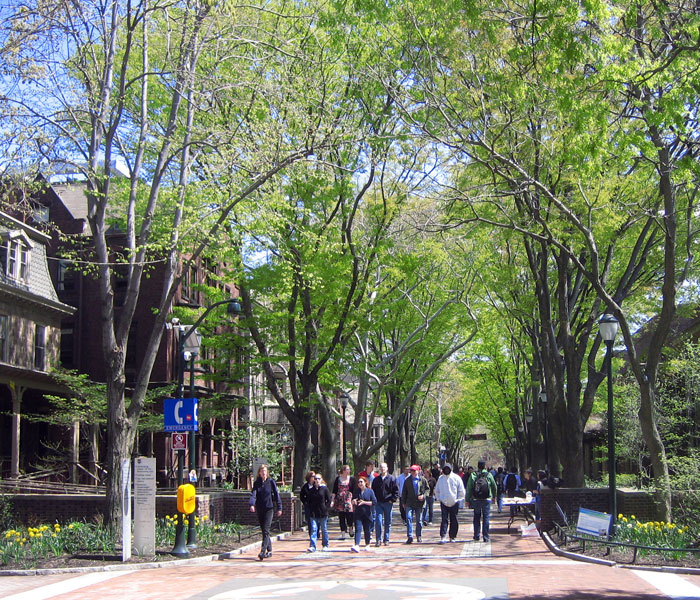
Brick or pavers
Historically, brick was the preferred walking surface from colonial days to the late 1800s. Brick is attractive and durable. That's why you can find 250-year-old brick sidewalks in towns like Boston, Philadelphia, and Williamsburg.
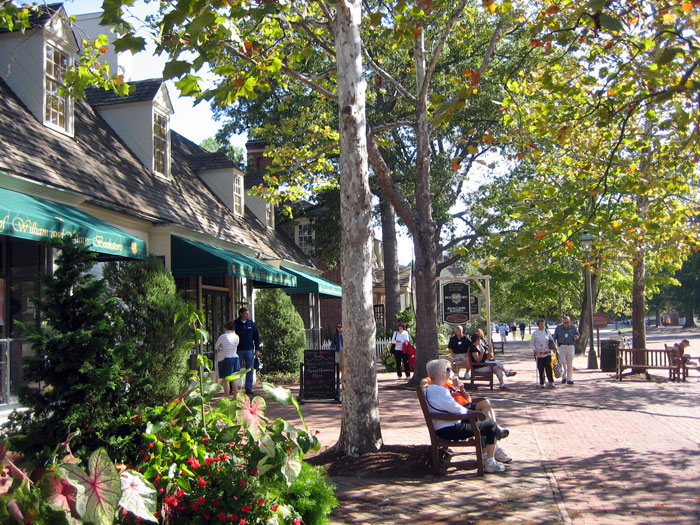
Today brick sidewalks are about three times as expensive to install as concrete sidewalks. They are much more compatible with trees than concrete, because the spaces between bricks allow rainwater to permeate the surface and promote deep root growth. When a tree root lifts brick, it is a simple matter to remove 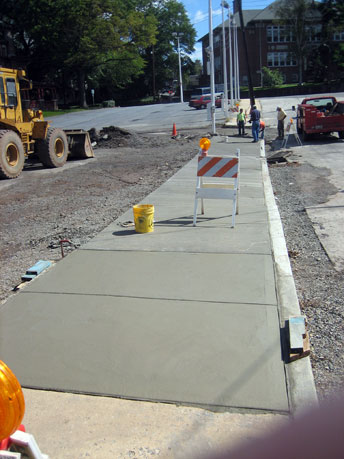 the affected bricks, shave down the roots, and re-lay the brick.
the affected bricks, shave down the roots, and re-lay the brick.
Concrete becomes material of choice, replacing brick
During the last century, concrete replaced brick as the standard surface for sidewalks in the United States. It is also the least sensible surface, simply because concrete slabs can easily become uneven and pose tripping hazards.
Concrete is not compatible with trees ...
Concrete slabs might be in great shape, but as soon as they become uneven they are hazardous for walking. There are many reasons concrete slabs can become uneven, and tree roots are only one. Normal freezing and thawing, the ground settling after underground pipes are installed, and other factors can create scores of uneven blocks that must be replaced or repaired.
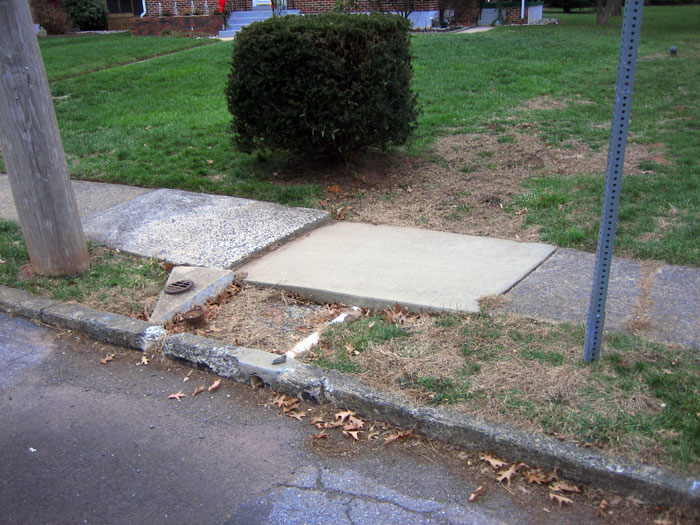
Jackhammering and replacement follows...
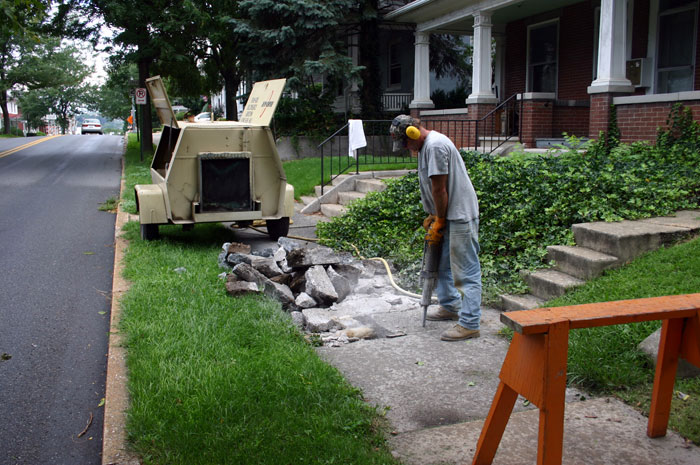
... and the problem often repeats itself within a few years.
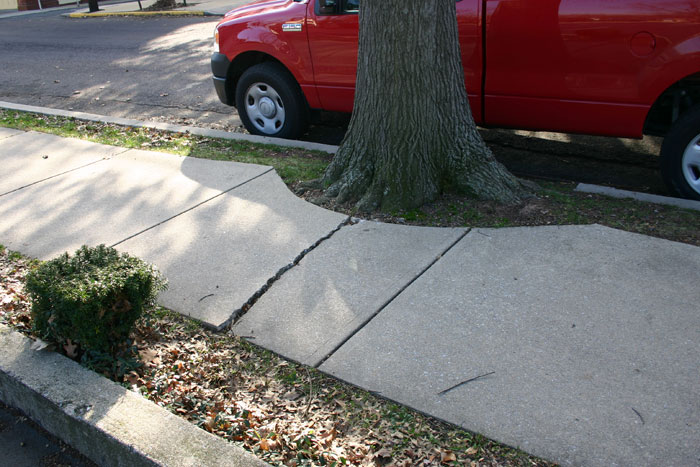
Often, when a sidewalk adjacent to a tree is replaced with more concrete, the new concrete is likely to be lifted and cracked in a short time, especially if tree roots are not given ample root to grow. Frustrated property owners blame the tree, but the materials and methods are to blame. Trees roots grow in perfectly predictable ways. They need ample room to grow and a compatible walking surface.
A better walking surface: Asphalt

Asphalt surfaces are far more compatible with trees than concrete surfaces. Because asphalt consists of aggregate matter bound together with asphalt and compacted, it is flexible. Unlike concrete, which is poured in rigid slabs, asphalt is continuously poured and has no seams to become uneven. Because asphalt is flexible, tree roots can grow right through it, or at worst cause bumps which are far less hazardous than "lips" from uneven concrete slabs.
Above: Note how easily asphalt can be used to replace a severely lifted sidewalk. No tree roots needed to be cut or shaved, because the asphalt was laid in a very gentle, ADA-compliant slope over the roots. The asphalt was then sprayed with an epoxy colored to match concrete.
For minor sidewalk lifting, bevel the edges
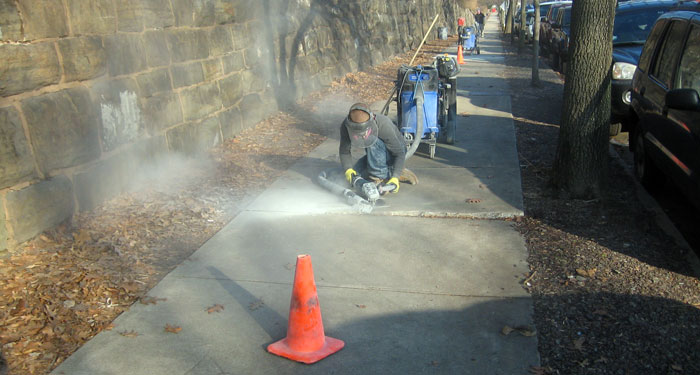
Concrete slabs are typically four inches thick. If concrete slabs are lifted two inches or less, it is cost-effective to bevel down the edges to remove the tripping hazard. The finished bevels, below, are compliant with the Americans with Disabilities Act (ADA) and can be done without removing the concrete.
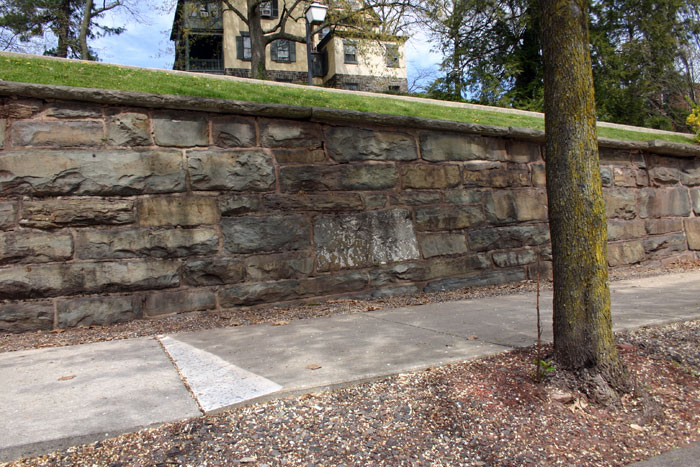
Click here for repairing lifted concrete sidewalks in Pennsylvania by saw cutting.
Asphalt in parks
Asphalt is commonly used for walkways through parks, such as Boston Common, below.

Colleges
Asphalt is commonly used for walkways through college campuses, such as Harvard Yard, below.
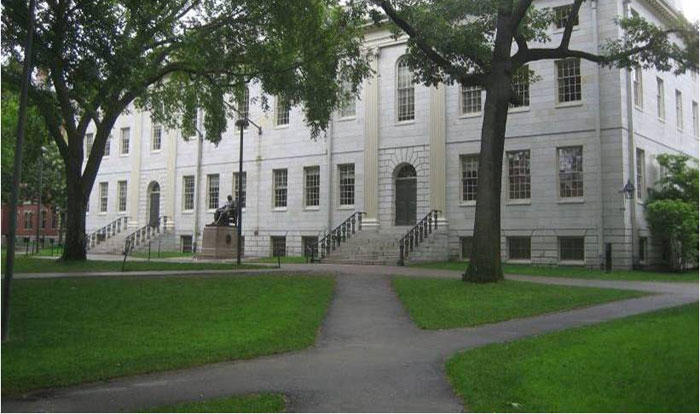
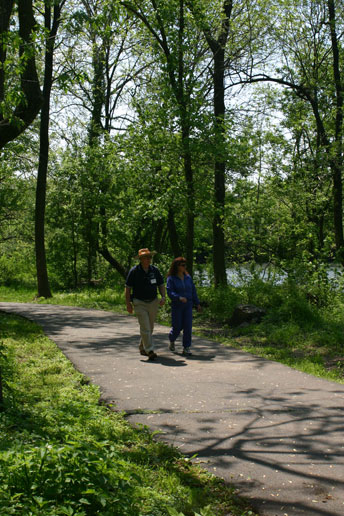
Asphalt is by far the most common surface for trails and greenways, left.
City sidewalks in Europe and New England
Asphalt is commonly used for sidewalks in European cities, such as Paris, below.
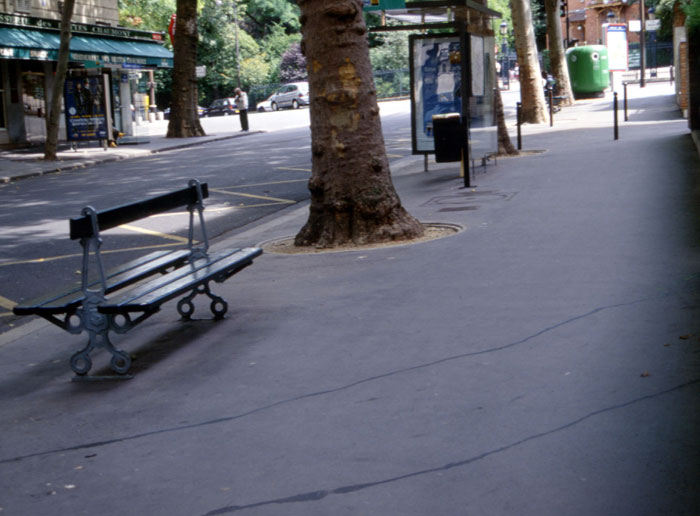
It is also found in many New England cities, such as Boston, Providence, and Montpelier, Vermont, below.
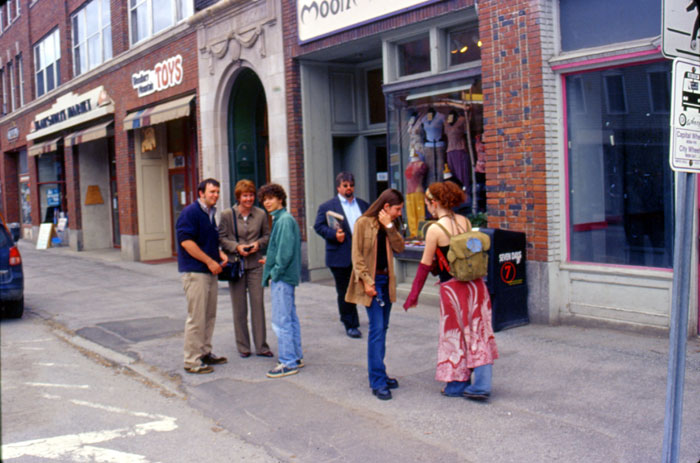
Streets and roads
Of course, we use asphalt for most of of our city and suburban streets.
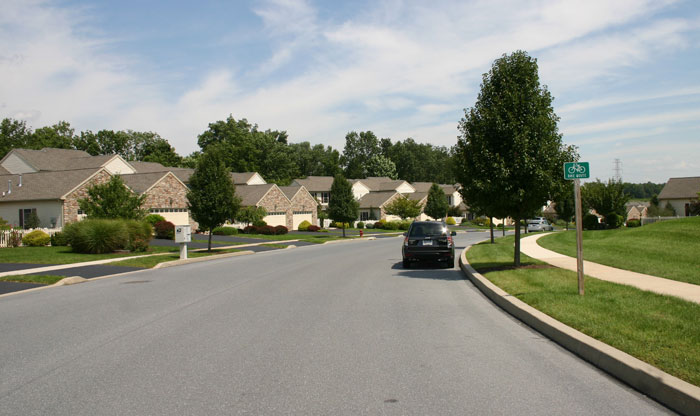
Apshalt covers virtually every parking lot in America.

So why are sidewalks made of concrete?
If streets are made of asphalt, driveways are made of asphalt, and parking lots are made of asphalt, why do we make sidewalks out of concrete? The only reason seems to be, "because we've always done it that way."
Asphalt compatible with tree roots
Because asphalt is so flexible, tree roots can grow right through it.
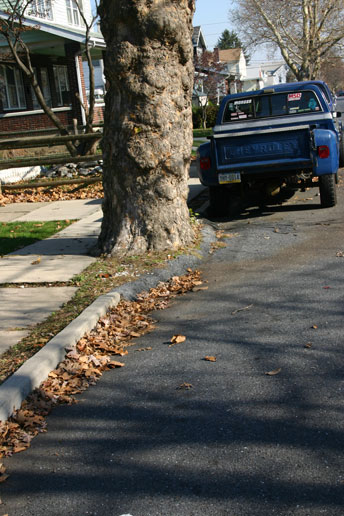
Asphalt is flexible
When a tree grows out into the street, a new asphalt curb can be molded around it.

Given a choice, walkers prefer asphalt
This pedestrian is not supposed to be using a bicycle lane on a busy street. She's supposed to be using the sidewalk. However, because asphalt bicycle lanes are smooth, and sidewalks of concrete slabs are not, she'd rather risk getting hit by a car or a bicycle than try to navigate uneven concrete slabs.


